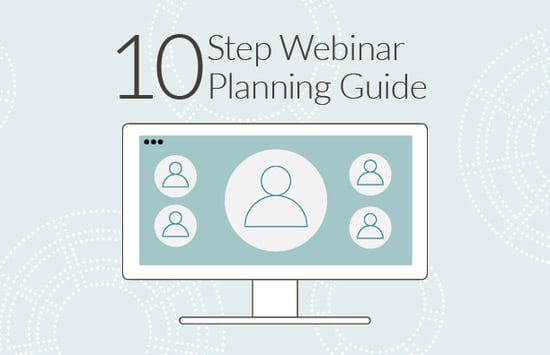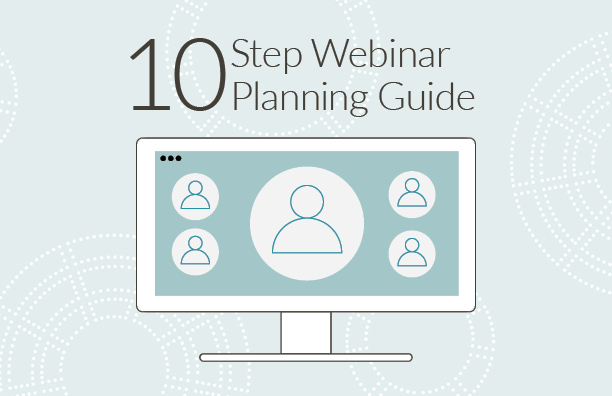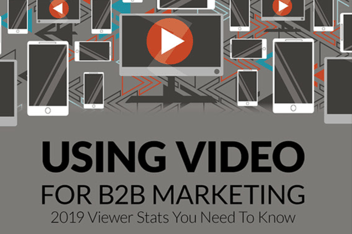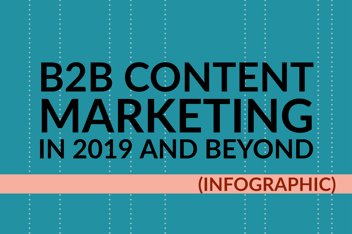10 Questions to Ask When Planning a B2B Webinar

In a time when in-person events are still slow to return, and many businesses even slower to send their employees back into those settings, finding alternative ways of reaching prospects, customers and even internal audiences with educational presentations is key.
While virtual conferences were a flash in the pan at the outset of the Covid-19 pandemic, webinars have steadily become a preferred way of providing an engaging and informative opportunity to reach audiences and generate leads.
According to GoToWebinar, nearly 3/4 of B2B marketers and sales leaders see webinars as an effective way to generate high-quality leads.
If you plan to use webinars as part of your content marketing strategy, here are 10 questions to ask yourself as you develop each one.
1. Who is my target audience?
As with any marketing content, the first question you need to answer is who you are trying to reach. Current customers? Prospects? Who are the buyer personas you need to speak to? Will there be multiple personas who have different pain points that should be addressed or considered?
Don’t rule out internal audiences, either. Especially for large organizations which may have a wide range of products and services under a single brand umbrella, keeping internal sales and customer service personnel updated on what is happening throughout the company can improve customer experience by ensuring they know where to find information that may not be part of their primary service area.
2. What topic will be discussed?
Again, build your webinar calendar around your over-arching content calendar. This can aid in building moment for a specific message you are trying to develop, such as the launch of a new product or feature, and also makes it simpler to repurpose content. The same data or stories you gather for a thought leadership article may be used in the webinar than developed into a series of social media posts.
3. When will you host the webinar?
Choosing a day and time is important to promote registration and attendance. According to MegaMeeting, Thursdays and Wednesdays are the most popular days for webinars (19 percent and 18 percent, respectively).
Time of day also matters, which should also take into consideration where your anticipated attendees live. If your webinar may reach an audience that crosses multiple time zones, consider the most common. Most common times tend to be late morning (10 a.m. or 11 a.m.).
4. What format will the webinar follow?
Depending on the chosen topic, there are multiple formats to consider for your B2B webinar. You could have a single presenter with an educational “how to” format, a panel discussion, a product launch, a customer success story that follows a case study format or even a Q&A format with a moderator presenting questions to the primary speaker.
5. Who will present or speak during the webinar?
Including third-party speakers provides greater credibility than simply including speakers from within your own company, especially for an audience of prospects. This could include customers, beta-users of a new product, industry organization leaders or industry analysts. Existing customers who have developed a comfort level and trust for your organization will be more open to an all-internal presentation, as will internal audiences.
Speakers should be comfortable leading discussion, working from notes (not a strict script) and able to respond to questions from the participants in a closing Q&A session.
6. How will you promote the webinar?
Most webinars are promoted for 3-4 weeks prior to the live event through email and social media. Emails may be sent to any contact list you have, segmented to target those with the most interest or who most closely fit your target audience, whether that means segmenting to send personalize invitations to existing customers, targeting a specific geographic region, or focusing on a specific job title.
Social media promotion can include both organic posts and boosted posts or paid ads targeted to specific audiences.
Don’t overwhelm email recipients, but also don’t forget that registration could be a last-minute decision—sending a final email to potential attendees even the day of could yield additional participation.
7. What information will you request for webinar registration?
As with other landing pages on your website, webinar registration is a lead capture opportunity. The form you ask attendees to complete should reflect the same considerations you use when gating other content—the more valuable the content, the more information you can request. Most often you can request name, email, company name and job title, which provides enough information for you to begin to build a lead profile but is not excessive and a barrier to registration.
You could also include a pre-selected box in the registration to add registrants to a newsletter or blog subscription list.
8. How will you encourage active participation during the webinar?
Live webinars are one of the few types of marketing content that are perfectly suited to interaction and engagement. This can be as simple as opening the opportunity for questions to be submitted in a chat feature or by email or other channel to a moderator, or you can include live polls or surveys that can also steer the conversation toward highly relevant information for that day’s audience. Think of asking questions like “What is your biggest challenge regarding (insert webinar topic)?”
9. How will you use the webinar content after the live meeting date?
Think beyond the sign-off of the live webinar to develop a strategy for continuing to use the valuable content included in more ways. This includes offering the webinar for later on-demand viewing through your website, developing blog posts or thought leadership articles using the same basic content, and turning soundbites and clips from the webinar into short social media videos for greater visibility.
Encourage others in your organization to use the webinar recording or relevant bits of information, also, including enabling sales and customer service representatives to send links or excerpts directly to prospects or existing customers they feel would find the information relevant and useful.
10. How will you use the contact information gained through registration?
Your webinar is not simply content—it is also a lead generation opportunity. Plan in advance for how you will nurture the leads gained through the registration process, likely with different nurturing plans for those registrants who actually attend and those who register but do not join the live event. (According to On24.com, webinars typically have a 35-55 percent registrant-to-attendee conversion rate.)
Webinars, both live and on-demand, are just one more tool to include in your inbound content marketing toolbelt. Incorporate them into each of your content marketing campaigns to increase engagement with motivated leads and prospects and provide additional content in repurposed video excerpts for social media and more. Download our Campaign Planning Calendar Template to begin sketching out your next 12 months of webinars, thought leadership articles, blog posts and more.
If you are ready to include webinars in your marketing strategy, but aren’t sure where to start, chat with one of our experienced webinar coordinators and marketing pros. Request a complimentary consultation today.
-1.png?width=1652&height=294&name=Jones(RGB)-1.png)












